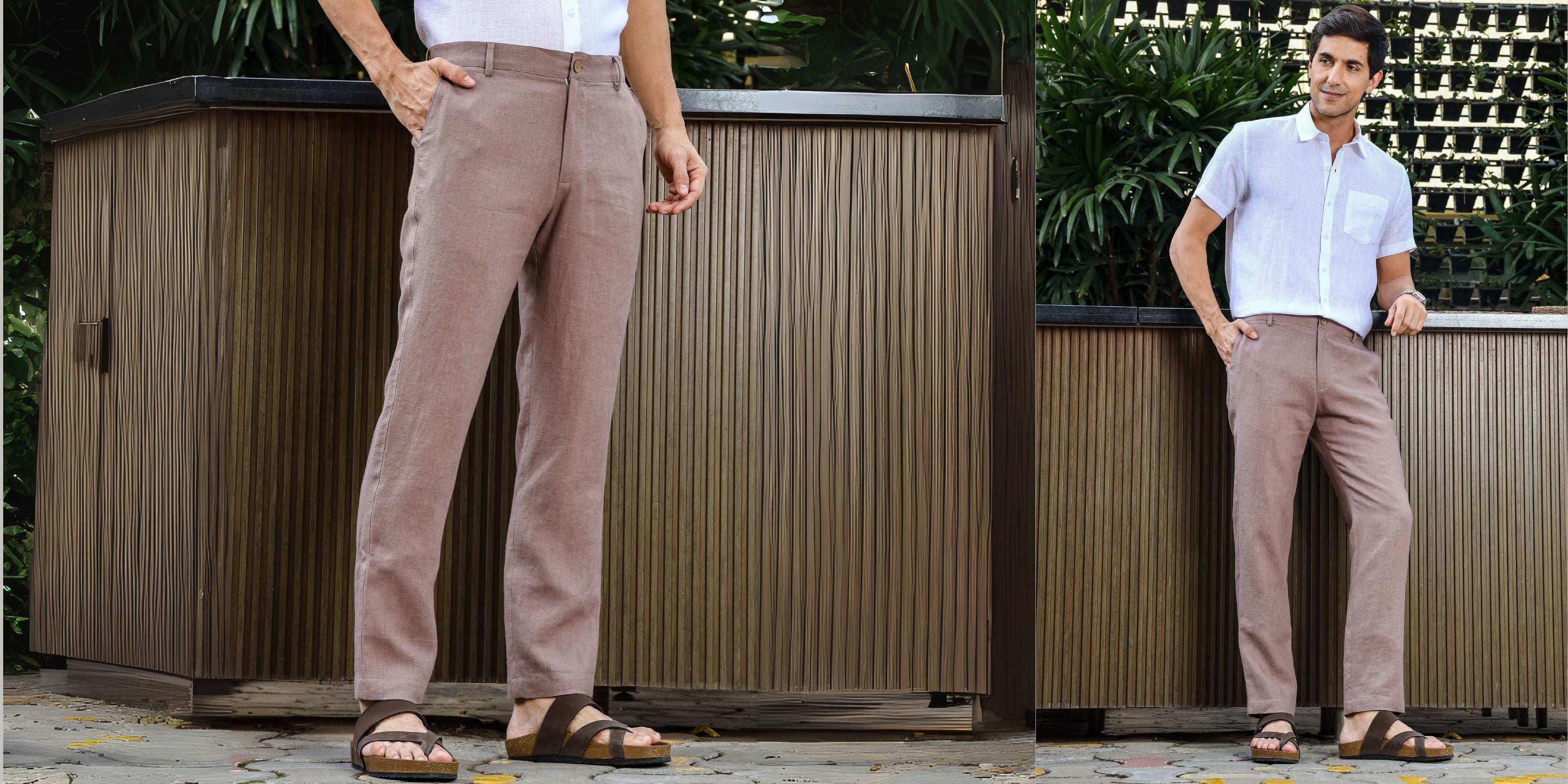How To Remove Stains From Linen – Expert Tips That Work
Linen has stood the test of time as one of the most breathable, durable, and naturally elegant fabrics. Its textured weave and natural fibers make it a popular choice for clothing and home décor. But like any fabric, linen is not immune to spills and stains. Whether you're dealing with coffee, red wine, ink, or grease, knowing how to properly care for stained linen is key to maintaining its beauty and extending its lifespan.
If you've ever panicked over a stain on your favorite linen shirt or tablecloth, this guide will walk you through proven, fabric-safe techniques for removing stains from linen without damaging its fibers. These stain removal methods are easy to implement and rely primarily on natural, gentle solutions—no need for harsh chemicals or bleach.
Why Linen Needs Special Care When It’s Stained

Linen is made from flax fibers, which are strong yet naturally absorbent. This absorbency is what makes linen breathable and cool, but it also means that stains can sink in quickly and set if not treated promptly. Linen also becomes weaker when wet, so aggressive scrubbing or chemical-based cleaners can break down the fibers over time, causing thinning or discoloration.
That’s why it’s important to understand not just how to clean linen, but how to clean it correctly. The goal is to lift the stain while preserving the fabric’s structure and natural color.
Key First Steps: What to Do When a Stain Happens
Before you reach for any cleaning agent, take the following steps immediately after a stain occurs:
-
Act quickly: The sooner you treat the stain, the better the results. Fresh stains are much easier to remove than set-in ones.
-
Blot the area: Use a clean, dry cloth or paper towel to blot up the excess liquid. Avoid rubbing, as that can push the stain deeper into the fibers.
-
Remove solids carefully: If the stain is caused by food or other solids, use a blunt knife or spoon to gently lift off what you can without pressing it into the fabric.
These quick steps can make a big difference and prepare the fabric for effective stain removal.
Pre-Treating Linen Stains: The Foundation of Effective Cleaning
Before washing your linen garment or item, it’s essential to pre-treat the stain. Pre-treatment means applying a cleaning agent directly to the stained area and allowing it time to break down the particles before you proceed to washing.
The choice of pre-treatment depends on the type of stain:
-
For oil or grease-based stains, use a gentle dish soap. Dishwashing liquids are formulated to break down fat and oil, making them perfect for kitchen-related spills.
-
For protein-based stains like blood, sweat, or dairy, rinse the fabric under cold water first. Hot water can cause these types of stains to set permanently.
-
For colored or persistent stains, consider natural solutions like vinegar, baking soda, or hydrogen peroxide for white or light-colored linen.
Apply the pre-treatment and let it sit for at least 10–15 minutes. Gently dab or rub the area with your fingers or a soft cloth to help the solution penetrate.

Choosing the Right Stain Remover for Linen
Linen is sensitive to harsh chemicals. Chlorine bleach, for example, can weaken linen fibers and lead to yellowing or discoloration. Instead, opt for natural and fabric-safe cleaners. Here are some commonly recommended options:
-
White vinegar: This is a safe and effective option for breaking down many organic stains, including wine, coffee, and sweat. Mix it with equal parts water and apply directly to the stain.
-
Baking soda: A mild abrasive and deodorizer, baking soda is ideal for treating sweat, underarm stains, and general discoloration. Mix it with a little water to form a paste and apply it to the fabric.
-
Hydrogen peroxide: This is a safer alternative to bleach, especially for white or very light-colored linens. It’s effective for blood, wine, and ink stains. Apply it directly to the stain and allow it to bubble for a few minutes before rinsing.
Always test these solutions on a hidden seam or area before applying them to a visible part of the fabric.
Washing Linen After Pre-Treatment
After the pre-treatment process is complete, it’s time to wash the linen. Proper washing is crucial, not only for removing any remaining stain residue but also for preserving the texture and color of the fabric.
Here are some best practices for washing stained linen:
-
Use cold or lukewarm water only: Hot water can cause shrinkage and may also set certain types of stains, making them harder to remove.
-
Choose a mild liquid detergent: Avoid powdered detergents or those with bleach, as these can leave residues or damage the fibers.
-
Wash on a gentle cycle: If you're using a washing machine, always opt for the delicate or gentle cycle.
-
Avoid overloading the machine: This ensures the linen item has room to move freely and wash evenly.
If you prefer hand washing, soak the item in cool water with a mild detergent for about 15–20 minutes, gently agitate the water, and rinse thoroughly.

Drying and Post-Care
After washing:
-
Do not wring the linen: Press out excess water gently by rolling the item in a clean towel.
-
Air dry when possible: Either lay the linen flat or hang it in a shaded area. Avoid direct sunlight as it can fade the fabric.
-
Iron while slightly damp: Linen responds well to ironing when it's still a little moist. This helps smooth out wrinkles and restores a crisp finish.
By following these steps, you can ensure your linen stays in great condition even after dealing with stubborn stains.
How to Remove Common Stains from Linen (Step-by-Step)
Here’s how to treat the most frequently encountered linen stains:
Coffee or Tea Stains
-
Blot the spill immediately.
-
Mix equal parts of white vinegar and water.
-
Apply the solution directly to the stain.
-
Let it sit for a few minutes before rinsing in cold water.
-
Repeat if necessary before washing.
Red Wine Stains
-
Sprinkle salt generously over the stain while it’s still wet.
-
Let the salt absorb the wine and dry completely.
-
Brush off the salt gently.
-
Apply white vinegar directly to the remaining stain.
-
Rinse and then wash as usual.
Fruit Juice Stains
-
Blot excess juice with a clean towel.
-
Rinse the area with cold water.
-
Use a mild detergent to hand wash the stained area.
-
For stubborn stains, use a white vinegar and water solution before washing.
Grease or Oil Stains
-
Apply a few drops of dishwashing liquid directly onto the stain.
-
Rub gently with your fingers or a soft cloth.
-
Rinse with warm (not hot) water.
-
For dried stains, soak the fabric in warm water with dish soap for 30 minutes before washing.
Ink Stains
-
Place a paper towel under the fabric to prevent spreading.
-
Dab the stain with rubbing alcohol or acetone (nail polish remover).
-
Blot gently and rinse with cold water before washing.
Blood Stains
-
Soak the fabric in cold water, ideally overnight.
-
Dab with hydrogen peroxide or lemon juice.
-
Blot with a clean cloth.
-
Rinse again and wash gently.
Sweat Stains
-
Create a paste with baking soda and water.
-
Apply to the stained area and let it sit for 30 minutes.
-
Rinse and wash normally.
Check out Our Collections
White Linen Shirt | Black Linen Shirt | Blue Linen Shirt | Pink Linen Shirt | Sky Blue Linen Shirt | Beige Linen Shirt | Light Blue Linen Shirt | Linen Navy Blue Shirt | Linen Shirt Green | Mens Long Sleeve Linen Shirts | Yellow Linen Shirt | Red Linen Shirt | Half Sleeve Shirt | Linen Jacket Men | Linen Nehru Jacket | Linen Kurta Pajama with Jacket | Linen Kurta for Men | Pure Linen Pants for Men | Pure Linen Trousers Mens
Frequently Asked Questions
Q1. Can I use bleach to remove stains from linen?
Ans: No. Bleach can weaken linen fibers and cause yellowing or fading. Use hydrogen peroxide or vinegar for stain removal instead.
Q2. How soon should I treat a linen stain?
Ans: Immediately. The faster you act, the better your chances of removing the stain completely.
Q3. What’s the safest homemade stain remover for linen?
Ans: A solution of white vinegar and water is gentle and effective for many organic stains.
Q4. Will hot water remove stains faster from linen?
Ans: No. Hot water can set most stains and shrink linen. Always use cold or lukewarm water.
Q5. Can I machine wash linen after pre-treating a stain?
Ans: Yes, but only on a gentle cycle using a mild detergent and cold or lukewarm water.
Q6. What do I do if a grease stain won’t come out?
Ans: Soak the fabric in a mixture of warm water and dish soap for 30 minutes before washing.
Q7. Are natural cleaners like baking soda and vinegar safe for all colors of linen?
Ans: Yes, but it’s wise to test them on a hidden area first, especially with darker fabrics.
Q8. How do I get ink stains out of linen shirts?
Ans: Dab with rubbing alcohol or nail polish remover, then rinse with cold water.
Q9. What’s the best way to remove sweat stains from linen clothing?
Ans: Apply a baking soda paste, leave it for 30 minutes, rinse, and wash normally.
Q10. Can I iron linen after stain removal?
Ans: Yes. For best results, iron linen while it's still slightly damp to restore its crisp finish.





